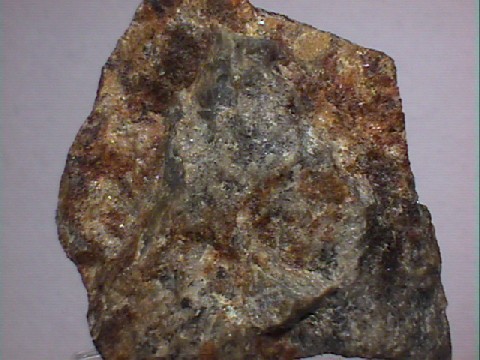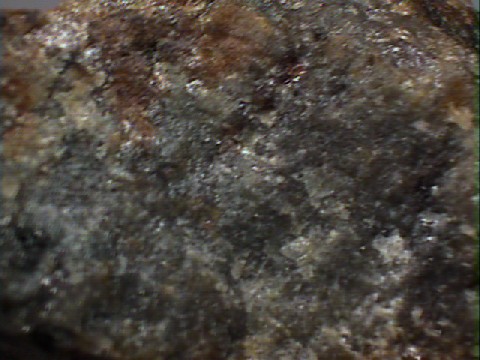 THE
MINERAL TRIPHYLITE
THE
MINERAL TRIPHYLITE
- Chemistry: Li(Fe, Mn)PO4, Lithium Iron Manganese Phosphate.
- Class: Phosphates
- Uses: As a source of lithium and phosphorus and as mineral specimens.
Specimens
Triphylite is a rather scarce phosphate mineral. It forms a solid solution series with the often associated mineral lithiophilite. Lithiophilite's formula is Li(Mn, Fe)PO4 and differs from triphylite by being rich in manganese instead of iron. The structures of the two minerals are the same and therefore any differences in physical properties between the two would be related to the iron/manganese percentage. Lithiophilite is slightly less dense and is pinkish to greenish brown whereas triphylite's color tends toward blue and blue gray. The series is often called the "triphylite series" and the two minerals are often listed together in mineral field guides and reference manuals. Triphylite's name in Greek means "family of three" and is probably referring to the three ions: lithium, iron and manganese.
Although triphylite generally does not form good crystals, it does have a wonderful although
indirect benefit to the mineral world. Triphylite is a primary phosphate mineral found in
phosphatic pegmatites and pegmatitic dikes. It alters easily into other phosphate minerals,
especially manganese phosphates. These rare phosphate minerals are usually brightly colored and
make wonderful mineral specimens. Some mines have been made famous by their suites of unusual
and beautiful secondary phosphate minerals such as
eosphorite,
PHYSICAL CHARACTERISTICS:
- Color is blue, gray-blue and gray-blue-green.
- Luster is vitreous.
- Transparency: Specimens are transparent to translucent.
- Crystal System is orthorhombic; 2/m 2/m 2/m
- Crystal Habits do not include well formed crystals because most crystals are embedded and appear as compact, cleavage masses and intergrown crystal clumps.
- Cleavage is near perfect in one direction (basal) and imperfect in two directions (prismatic). All cleavages are at right angles to each other.
- Fracture is uneven.
- Hardness is variable from 4 - 5
- Specific Gravity is approximately 3.58 (above average), but decreases with decreased iron content.
- Streak is white to grayish-white.
- Other Characteristics: When powdered and placed in a gas flame, it gives the flame a bright red color and this indicates the presence of lithium. Hyper-weathering produces a black stain of manganese oxides.
- Associated Minerals include lepidolite,
beryl,
quartz,
albite,
lithiophilite,
amblygonite,
spodumene
and various manganese oxides.
Associated secondary phosphates include
eosphorite,
reddingite ,sicklerite ,salmonsite , strengite, purpurite,phosphoferrite , wolfeite,triploidite , hureaulite,fairfieldite ,dickinsonite ,stewartite , vivianite,heterosite andfillowite . - Notable Occurrences are widespread and include Verutrask, Sweden; Mangualde, Portugal; Bavaria, Germany; Buckfield, Poland; Karidid District, Namibia; Namaqualand, South Africa; the Buranga pegmatite, Rwanda; Yellowknife, Northwest Territories, Canada; Rajasthan, India; Rio Grande do Norte, Brazil and Pilbara District, Australia. In the United States localities include Pala District of San Diego County, California; Newry, Stoneham and Topsham, Maine; Palermo Quarry, North Groton, New Hampshire; Custer, South Dakota and Branchville, Fairfield County, Connecticut.
- Best Field Indicators are color, associations, environment, cleavage and density.



